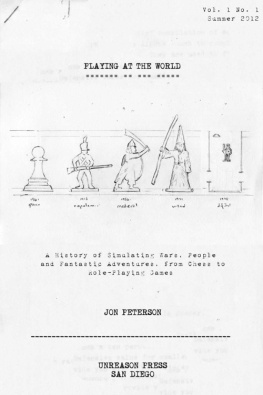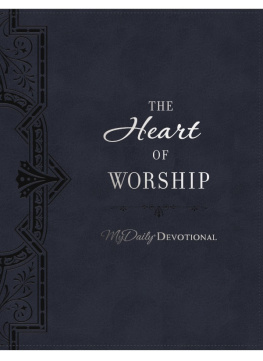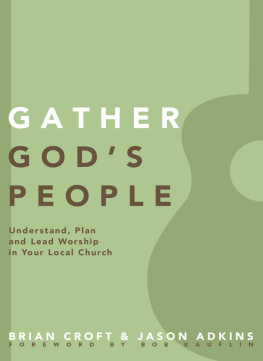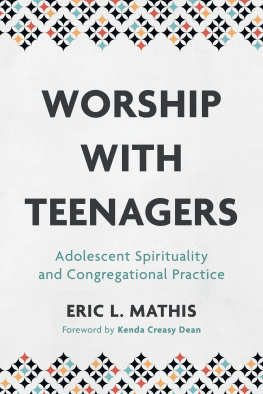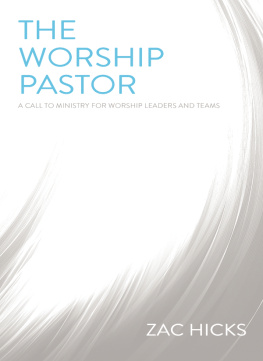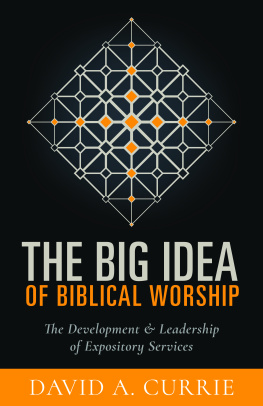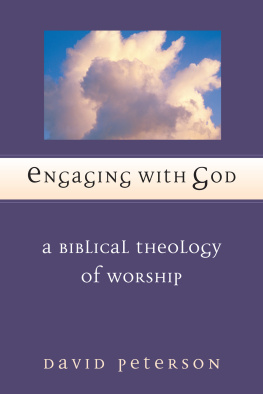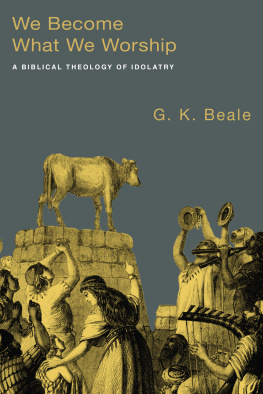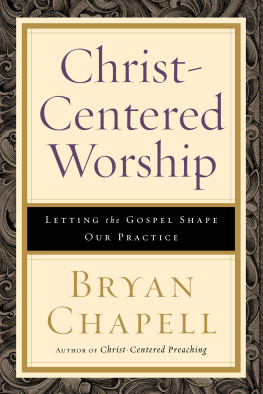Peterson - Encountering God together : Biblical patterns for ministry and worship
Here you can read online Peterson - Encountering God together : Biblical patterns for ministry and worship full text of the book (entire story) in english for free. Download pdf and epub, get meaning, cover and reviews about this ebook. year: 2013, publisher: Inter-Varsity Press, genre: Religion. Description of the work, (preface) as well as reviews are available. Best literature library LitArk.com created for fans of good reading and offers a wide selection of genres:
Romance novel
Science fiction
Adventure
Detective
Science
History
Home and family
Prose
Art
Politics
Computer
Non-fiction
Religion
Business
Children
Humor
Choose a favorite category and find really read worthwhile books. Enjoy immersion in the world of imagination, feel the emotions of the characters or learn something new for yourself, make an fascinating discovery.

Encountering God together : Biblical patterns for ministry and worship: summary, description and annotation
We offer to read an annotation, description, summary or preface (depends on what the author of the book "Encountering God together : Biblical patterns for ministry and worship" wrote himself). If you haven't found the necessary information about the book — write in the comments, we will try to find it.
Encountering God together : Biblical patterns for ministry and worship — read online for free the complete book (whole text) full work
Below is the text of the book, divided by pages. System saving the place of the last page read, allows you to conveniently read the book "Encountering God together : Biblical patterns for ministry and worship" online for free, without having to search again every time where you left off. Put a bookmark, and you can go to the page where you finished reading at any time.
Font size:
Interval:
Bookmark:
. In Engaging with God: A Biblical Theology of Worship (Leicester: Apollos; Downers Grove: InterVarsity Press, 1992) I show how the theme of worship relates to the developing story of the Bible and relates to topics such as creation, sin, covenant, redemption, the people of God and the future hope.
. To some extent this section draws on the argument of a 2008 report by the Doctrine Commission of the Synod of the Anglican Diocese of Sydney, entitled A Theology of Christian Assembly.
. I have discussed this more fully in D. G. Peterson, Engaging with God: A Biblical Theology of Worship (Leicester: Apollos; Downers Grove: InterVarsity Press, 1992), pp. 2349.
. L. Burns, The Nearness of God: His Presence with His People (Phillipsburg: P. & R., 2009), shows how the theme of Gods presence with his people is expressed in the Bible from Genesis to Revelation. Burns draws particular attention to the transforming implications of Gods presence with us through the incarnation of his Son and the gift of his Holy Spirit.
. Although Matt. 18:20 and 1 Cor. 5:35 specifically focus on meetings for disciplinary decisions, the promise of Christs presence can be applied to any assembly in his name. But Matt. 18:20 does not mean that any gathering of two or three believers constitutes a church. In Matt. 18:17 the church is clearly a larger entity than the two or three witnesses mentioned by Jesus.
. I have modified the NIV translation of Rom. 12:1 and Heb. 12:28 to indicate that the Greek more literally means serve or service. The next chapter will explain this and show how worship terminology from the Old Testament has been adapted in the New Testament to describe the work of Christ and the response we should make to it.
. E. Underhill, Worship , 3rd ed. (London: Nisbet, 1937), p. 3.
. J. E. Burkhart, Worship: A Searching Examination of the Liturgical Experience (Philadelphia: Westminster, 1982), p. 17.
. G. Kendrick, Worship (Eastbourne: Kingsway, 1984); Learning to Worship as a Way of Life (Minneapolis: Bethany House, 1985), p. 32, rightly condemns a narrowing of worship to praise: as if the highest achievement of our whole pilgrimage on earth was to enter some kind of praise-induced ecstasy!
. The Hebrew verbal form hitaw literally means bend oneself over at the waist. It is regularly translated by some form of proskynein in the Greek version of the Old Testament (the Septuagint). On these and related terms, see D. G. Peterson, Engaging with God: A Biblical Theology of Worship (Leicester: Apollos; Downers Grove: InterVarsity Press, 1992), pp. 5563.
. The first term in such references describes the gesture (he bowed down) and the second explains its significance (and worshipped or paid homage).
. The Greek text of John 4:23 literally reads in spirit and truth. However, NIV (2011) has rightly interpreted this to mean in the Spirit and in truth. Jesus has just offered the woman at the well living water (4:10), which will become a spring of water welling up to eternal life (4:14). This clearly anticipates the offer of the Holy Spirit, which is expressed in similar terms in 7:3739.
. In Greek these were words based on the seb - stem or words in the phoboun group, generally translating Hebrew yr and its cognates. See Peterson, Engaging with God , pp. 7072.
. The Hebrew verb bad , which literally means serve, is sometimes also translated worship. When it specifically refers to Israels service to God, it is often rendered by latreuein in the Greek version of the Old Testament. See Peterson, Engaging with God , pp. 6470.
. The service of priests and Levites is generally indicated by another Hebrew verb rat and translated leitourgein in the Septuagint.
. It is confusing that the NIV (2011) translates the same Greek verb differently in these two related contexts in Heb. 9:14 and 12:28.
. See H. N. Ridderbos, Paul: An Outline of His Theology (Grand Rapids: Eerdmans, 1975), p. 486; D. A. Carson, Worship Under the Word, in D. A. Carson (ed.), Worship by the Book (Grand Rapids: Zondervan, 2002), pp. 1163.
. I have written about the way the heavenly worship portrayed in the Revelation to John should impact our lives on earth in Engaging with God , pp. 261282.
. M. Volf, Worship as Adoration and Action: Reflections on a Christian Way of Being-in-the World, in D. A. Carson (ed.), Worship: Adoration and Action , World Evangelical Fellowship (Grand Rapids: Baker; Exeter: Paternoster, 1993), p. 207.
. Volf, Worship as Adoration and Action, p. 207.
. Ibid., p. 209.
. Ibid.
. Volf, ibid., p. 211, argues that the distinction between adoration and action is not a distinction between activity and passivity, but a distinction between two forms of human activity.
. Carson, Worship by the Book , pp. 2658, offers a larger definition of worship that seeks to reflect the perspectives of both biblical and systematic theology.
. The Greek verb oikodomein , sometimes translated edify or strengthen, was used literally for the building of houses, temples and other structures. It was also used figuratively, for the establishment of individuals, groups or nations in some situation or way of life.
. This rock refers back to Peters confession (Matt. 16:16), when he takes the lead in acknowledging Jesus as the Christ, the Son of the living God. See J. Nolland, The Gospel of Matthew: A Commentary on the Greek Text , NIGTC (Grand Rapids: Eerdmans; Bletchley: Paternoster, 2005), p. 669.
. B. Grtner, The Temple and the Community in Qumran and the New Testament (Cambridge: Cambridge University Press, 1965), p. 114. See my comment on Matt. 18:20 in chapter 1, n. 4, and Nolland, Matthew , pp. 750751.
. So the image here is different from that in Eph. 2:20, where the apostles and prophets are the foundation and Christ Jesus is the chief cornerstone. Note also that the image of the Spirit-filled temple is applied to the local congregation in 1 Cor. 3:1617, whereas in Eph. 2:2122 it refers to the church that includes believers throughout time and space (cf. Eph. 1:2223).
. P. Vielhauer, Oikodom: Aufstze zum Neuen Testament , Theologische Bchere, Neues Testament, 35 vols. (Munich: Kaiser, 1979), vol. 2, p. 72 (my tr.). Cf. H. N. Ridderbos, The Upbuilding of the Church, in Paul: An Outline of His Theology (Grand Rapids: Eerdmans, 1975), pp. 429486.
. P. T. OBrien, The Letter to the Ephesians , PNTC (Grand Rapids: Eerdmans; Leicester: Apollos, 1999), p. 303. OBrien discusses the structure and meaning of Eph. 4:12 on pp. 301305.
. M. Barth, Ephesians 46 , AB 34A (New York: Doubleday, 1974), p. 440.
. Barth, ibid., p. 444, observes that 4:1415 calls for the right confession and it urges the whole church and all its members to be a confessing church. Eph. 4:19, with its emphasis on the right choice of language, suggests that everyday conversation amongst believers can also be the means of building one another up in Christ.
. R. Y. K. Fung, Some Pauline Pictures of the Church, EvQ 53 (1981), pp. 9596.
. Love builds up when believers regard the weaknesses of others and see the need to strengthen them in their relationship with Christ. In practical terms this may involve some restriction of personal liberty.
. J. A. Robinson, St. Pauls Epistle to the Ephesians (London: James Clarke, n.d.), pp. 102103.
. The ministry of encouragement, which is the responsibility of all Christians, involves moral appeal and consolation on the basis of gospel truths in the manner of the apostles own teaching.
. I discuss the nature of congregational prophecy in Enriched in Every Way: Gifts and Ministries in 1 Corinthians, in B. S. Rosner (ed.), The Wisdom of the Cross: Exploring 1 Corinthians (Nottingham: Apollos, 2011), pp. 134163.
. The word translated strengthening comes from the same root as the verb build (up), edify, which is used in vv. 45, 12. It would be more consistent to translate v. 3 as for their edification.
Font size:
Interval:
Bookmark:
Similar books «Encountering God together : Biblical patterns for ministry and worship»
Look at similar books to Encountering God together : Biblical patterns for ministry and worship. We have selected literature similar in name and meaning in the hope of providing readers with more options to find new, interesting, not yet read works.
Discussion, reviews of the book Encountering God together : Biblical patterns for ministry and worship and just readers' own opinions. Leave your comments, write what you think about the work, its meaning or the main characters. Specify what exactly you liked and what you didn't like, and why you think so.




